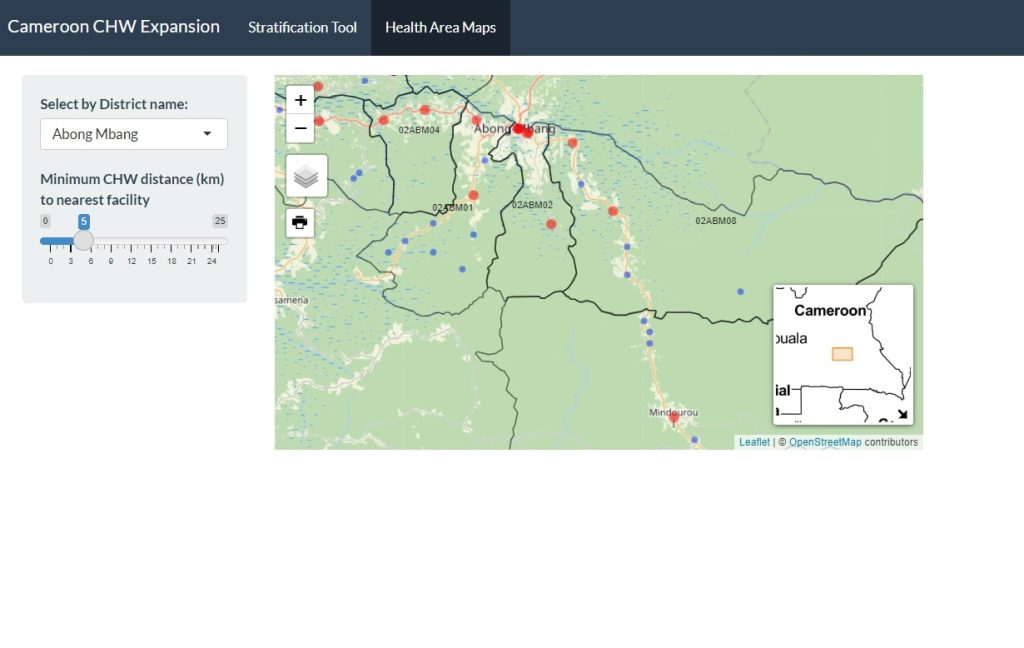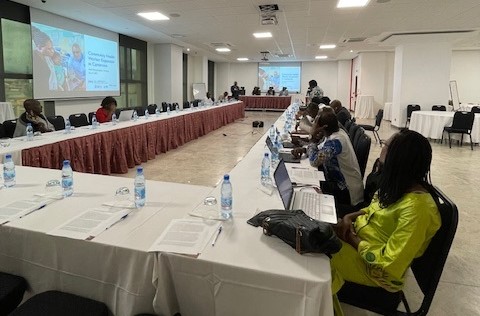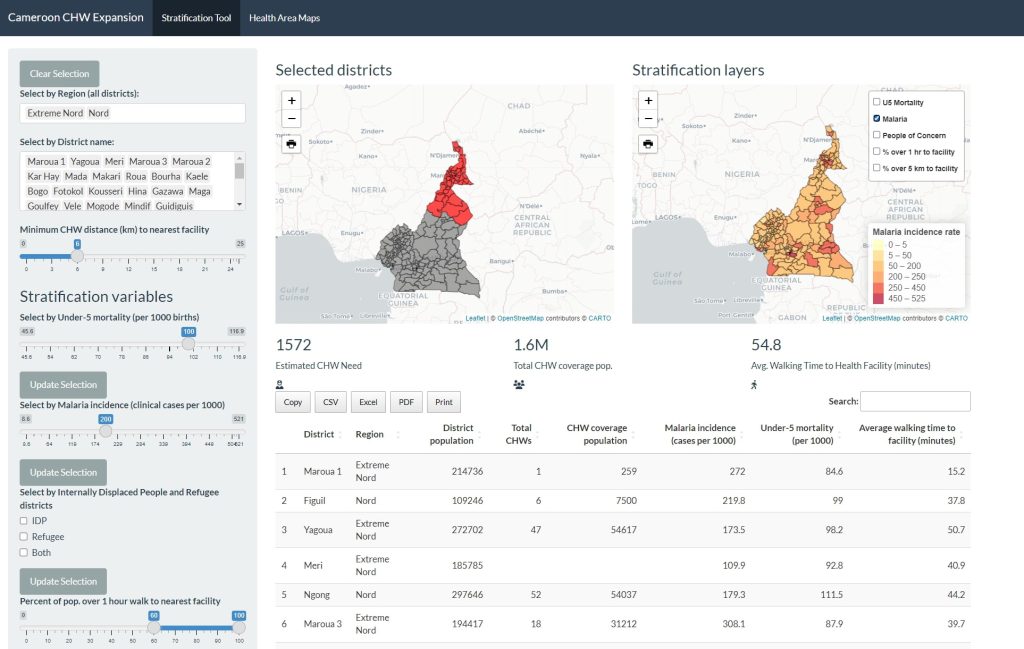“The concept of CHWs came from recognition that health facilities could not provide services for everyone. There are many people that cannot access healthcare, and one way to bring healthcare closer to these populations is through CHWs.” – Dr Germaine Ekoyol, Head of Case Management at the Cameroon National Malaria Control Program
Community health workers (CHWs) in Cameroon support a wide range of health programs, including malaria, maternal and child health, and HIV, as well as diagnosis, treatment and referral for diarrhea and respiratory infections. In addition to testing for malaria, providing treatment for uncomplicated malaria cases, and referring patients with danger signs to health facilities, CHWs also support malaria prevention efforts and provide health education. For example, they support door-to-door campaigns to ensure families use the insecticide-treated nets provided by health facilities.
The Cameroon Ministry of Public Health’s National Community Health Strategy for 2021-2025 has the objective of expanding CHW services to all health districts in the country. To support this new strategy, PMI (through the PMI Insights project), Cameroon’s Ministry of Public Health, and the National Malaria Control Program developed a tool to help ensure that the maximum number of people are covered with available resources and that CHWs are located where the need is greatest.
The tool draws on an array of available data sets to create an interactive dashboard that generates different scenarios to help determine the optimal placement of CHWs in communities within health districts. Some of the data points include distance to a health facility, all-cause child mortality, and malaria incidence.
“CHWs may have been placed in areas in the past where they were less needed. For example, in an area with few malaria cases year-round,” explains Dr. Wirngo Mohamadu, a PMI Malaria Program Specialist at USAID in Cameroon. “This tool can help maximize the impact of the CHWs. Making sure CHWs are located where they are most needed is vital for improving the health of people throughout Cameroon.”

Health area map view of the modeling tool, which allows users to view expansion scenarios by health district.
Multiple health programs, implementing partners, and civil society organizations were consulted and all agreed on one shared priority data point for expanding CHWs: geographic access to care. The tool can generate maps of individual health districts to inform decisions on how to improve access for populations furthest from health facilities. “We focused on accessibility to health facilities and then developed a framework where you could layer in additional pieces of information,” explains Dr. Justin Millar, a Research Scientist at PATH who led the development of the dashboard. Additional considerations included the presence of internally displaced populations and refugees, which expands the population needing services for diseases, such as malaria, beyond what is normally found in a particular area.

The Cameroon Ministry of Public Health and National Malaria Control Program gather at the June 2023 CHW expansion modeling dissemination meeting to discuss outputs of the tool and next steps. Photo credit: Justin Millar, PATH
In June 2023, the Cameroon Ministry of Public Health and National Malaria Control Program held a meeting in Yaoundé, Cameroon, to share the model and its outputs with stakeholders and discuss how the evidence-based information will drive where CHWs are recruited. The meeting included an orientation to the dashboard to equip representatives from the Ministry of Public Health and other implementing partners working in community health to use the dashboard for planning. Discussions also focused on how to bring in additional stakeholders to keep the dashboard updated and relevant.
With key data at their fingertips, program planners in Cameroon are now better equipped to make sure previously underserved communities have access to the health care they need to support a healthier and brighter future for children and families.
Launched in October of 2020 by the U.S. President’s Malaria Initiative, PMI Insights works to generate evidence and data to inform the global malaria community of best practices; to identify and facilitate stakeholder alignment around the most pressing gaps in malaria control and elimination policy, strategy, and implementation guidance; and to disseminate of results in a clear and actionable way.
Cover photo: Community health workers are a vital link between health facilities and communities. Photo credit: Souleymanou, PMI


